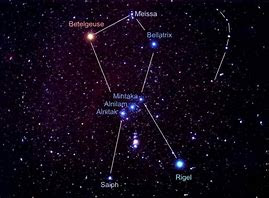"We are all in the gutter, but some of us are looking at the stars"
- Oscar Wilde, Lady Windermere's Fan
The long, dark nights of Winter are perfect for stargazing (when the skies are clear enough of course). One of the easiest constellations to spot is Orion, thanks to the brightness of its stars and the distinctive line of the three of them constituting his 'belt'. Look for Orion in the southern quarter of the sky from about 9pm onwards. The easiest way to find it is to look for the three bright, closely aligned stars of Orion's belt.
The constellation is named for Orion, a hunter in Greek myth who was placed in the night sky by Zeus (or in some stories, Artemis). Orion is most visible from January to March, Winter in the Northern hemisphere and Summer in the Southern hemisphere. In October, a meteor shower known as the Orionids can be seen - so named because it appears to originate from within Orion.
Winter Blessings and Beauties: Day 80
Orion
On a clear, crisp night, find Orion in the night sky. Once you've learned what it looks like you'll easily be able to find it another time. If your interest is piqued, learn some other easily distinguished constellations such as The Plough (aka The Big Dipper) or Casseiopeia, and find out about their myths.
Alternatively - create your own constellations. What do the arrangements of stars in the sky suggest to you? Find shapes and give them your own names!

No comments:
Post a Comment